If you’re a spicy food fanatic, you’re likely familiar with different types of chili peppers and the various levels of heat they can pack into a dish. While all chili peppers are native to the Americas, different species and cultivars originate from a range of places across South, Central, and North America.
In this guide, we’ll discuss five types of chili peppers, their botanical classifications, where they originate, and how people like to use them.
So, without further ado, let’s jump in!
Chili Peppers: Botanical Classification and a Brief Intro
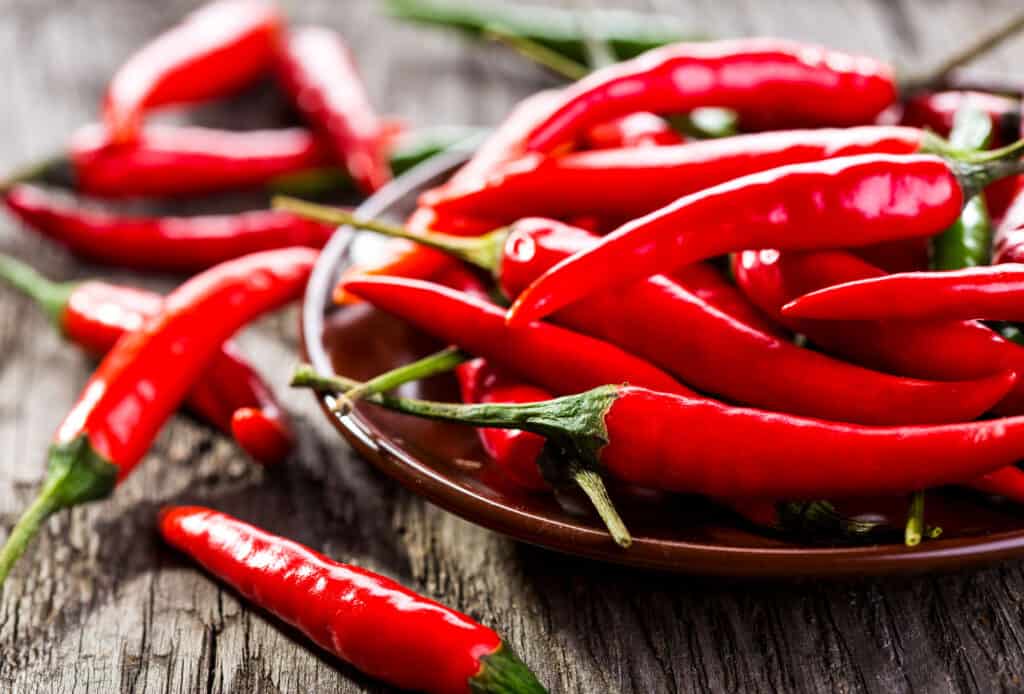
While all naturally occurring species of chili peppers originated in the Americas, thousands of cultivars exist today from all over the world.
©iStock.com/nitrub
Chili peppers belong to the Capsicum genus of peppers that are all native to the Americas. As the genus name suggests, almost all of these peppers contain various levels of capsaicin, the chemical responsible for the heat in chilis. In the Capsicum genus, there are about 25 species and five of those species are domesticated and widely cultivated. These five species are Capsicum annuum, Capsicum frutescens, Capsicum baccatum, Capsicum chinense, and Capsicum pubescens.
Some of these species have been domesticated for thousands of years. For example, scientists have traced the origin of the domesticated chili pepper, Capsicum annuum, to about 6,500 years ago in Central-East Mexico. Widely consumed domesticated cultivars of this species include the bell pepper, jalapeno, and banana pepper. You may be surprised to see the sweet, mild-tasting bell pepper on this list. Technically, the bell pepper belongs to the Capsicum genus, but a recessive gene in this cultivar eliminates the capsaicin from the fruit, thus rendering it mild and sweet.
5 Different Types of Chili Peppers and Where They Originate
Now that you have a brief intro into the world of chili peppers, we’ll discuss 5 unique types of chili peppers, and where they originated. These origin dates span from over 6,000 years ago to within the last few years. While all naturally occurring species of chili peppers originated in the Americas, thousands of cultivars exist today with origin points from all over the world. Horticulturists and plant breeders across the globe have taken up the pursuit of creating cultivars, often wildly spicy, of the five domesticated chili species.
1. Sandia Pepper (Capsicum annuum ‘NuMex Sandia’)
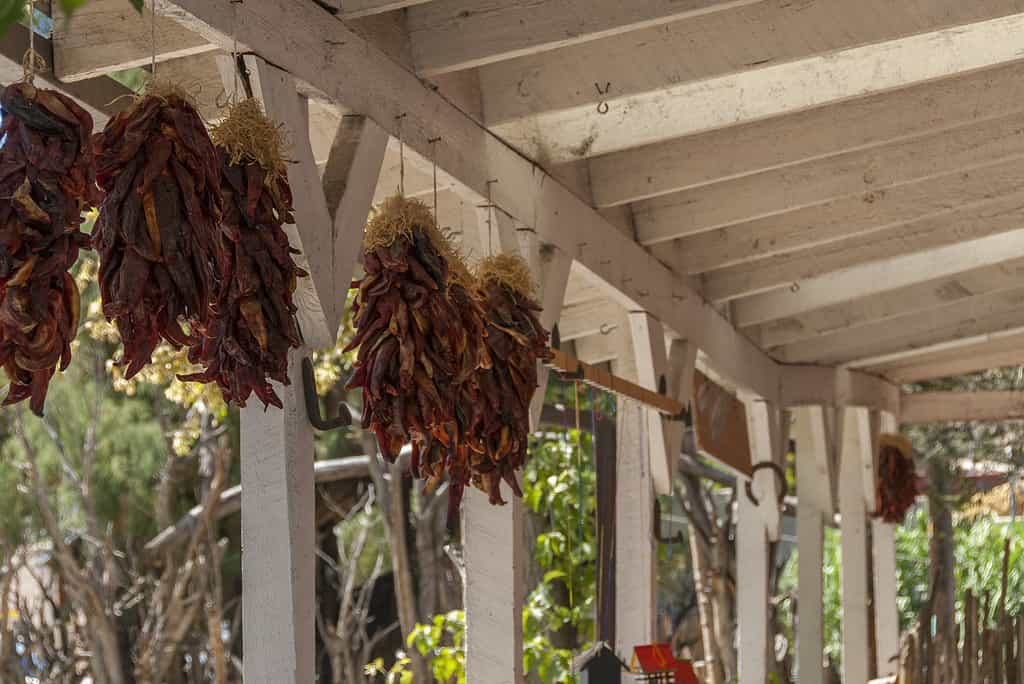
People use Sandia peppers fresh, roasted, dried, and powdered.
©iStock.com/fredcorcoran
Plant breeders at New Mexico State University created the Sandia pepper, or ‘NuMex Sandia’, a cultivar of Capsicum annuum. Folks at NMSU created this hybrid cultivar as a cross with the mild Anaheim pepper and another, hotter cultivar. People use this pepper fresh, roasted, dried, and powdered.
2. Habanero Pepper (Capsicum chinense ‘Habanero’)
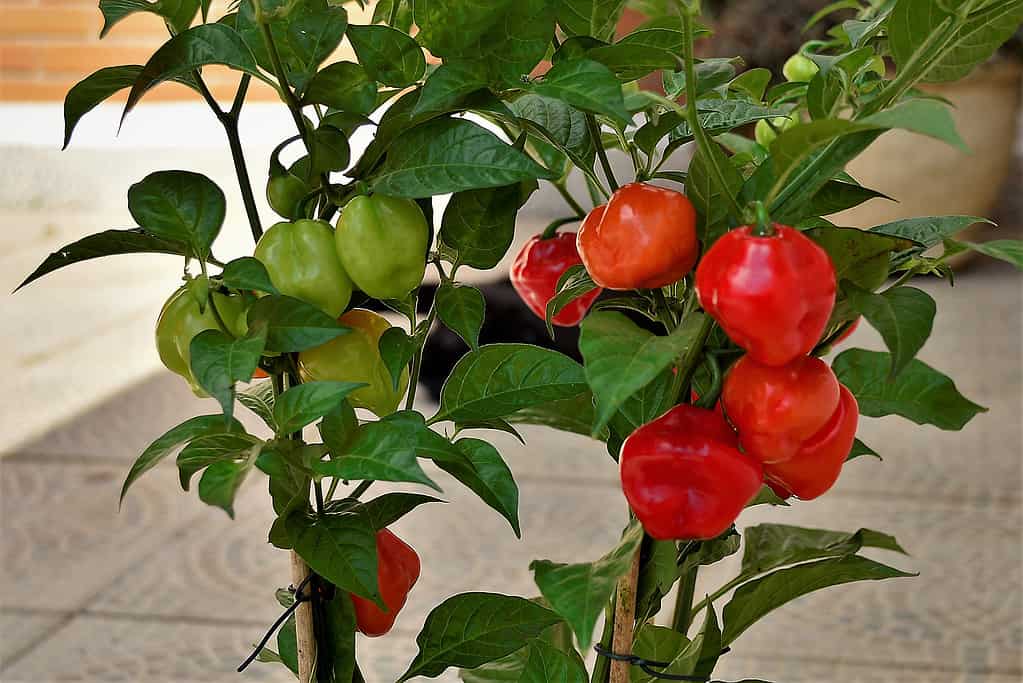
Habanero peppers have been in cultivation for thousands of years, used today mainly for hot sauces, salsas and salads.
©iStock.com/NancyAyumi
Likely native to the Amazon rainforests, the mighty Habanero pepper has been in cultivation for thousands of years, perhaps longer than C. chinense. Recently, a team of researchers unearthed an intact habanero seed pod that dated back to 6,500 B.C. Today habaneros are used in the production of hot sauces and spicy, fresh salsas and salads. They’re also roasted and used in a number of cooked dishes.
3. The Tabasco Pepper (Capsicum frutescens ‘Tabasco’)
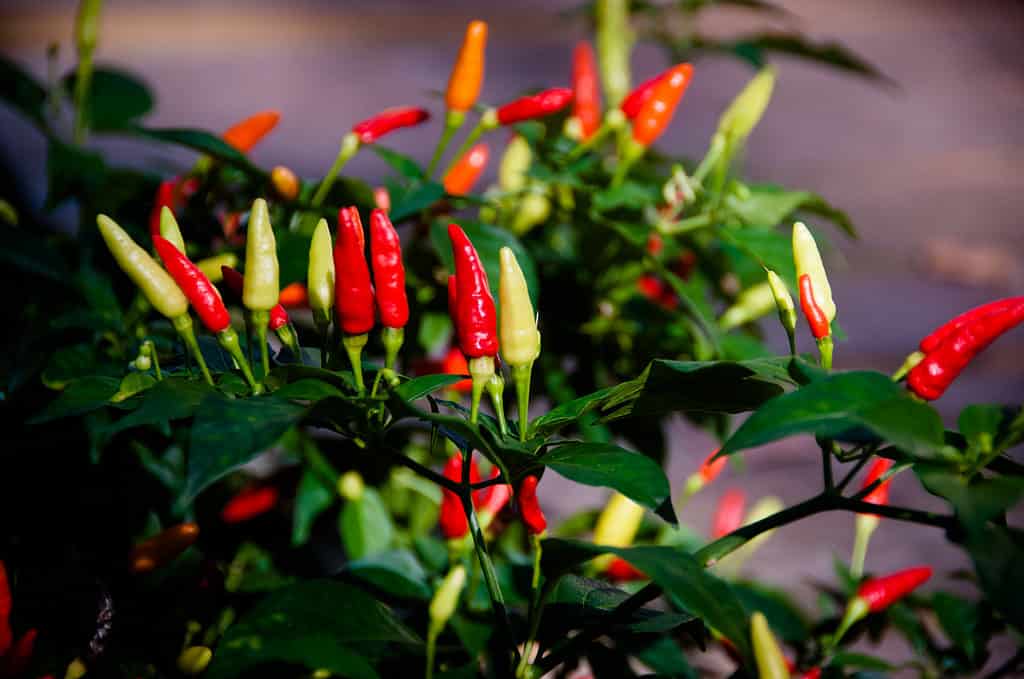
Tabasco chili peppers, which grow upright on the plant, are known for their use in Tabasco sauce.
©Csisson8/Shutterstock.com
The Tabasco pepper originated in Mexico and is a cultivar of Capsicum frutescens. These types of chili peppers are notable for maturing and growing upright on the plant. They are also highly ornamental. This cultivar is named after the Mexican state of Tabasco and is widely known for its use in Tabasco hot sauce, which was created in the 1860s.
4. Lemon Drop Pepper (Capsicum baccatum ‘Lemon Drop’)

The Lemon Drop pepper is a citrusy pepper that originates from Peru.
©Wirestock Creators/Shutterstock.com
Originating in Peru, the Lemon Drop pepper, also known as the lemon aji, is a delightful cultivar of Capsicum baccatum. This citrusy yellow pepper is an integral part of Peruvian cuisine and is considered to be a crucial ingredient in many dishes, along with red onion and coriander. The Capsicum baccatum species was likely first domesticated over 4,000 years ago in the Andes region by the Arawak people. These peppers are especially popular in fresh salsas since they add such a wonderful spicy, citrus flavor.
5. Rocoto Canario Pepper (Capsicum pubescens ‘Rocoto Canario’)
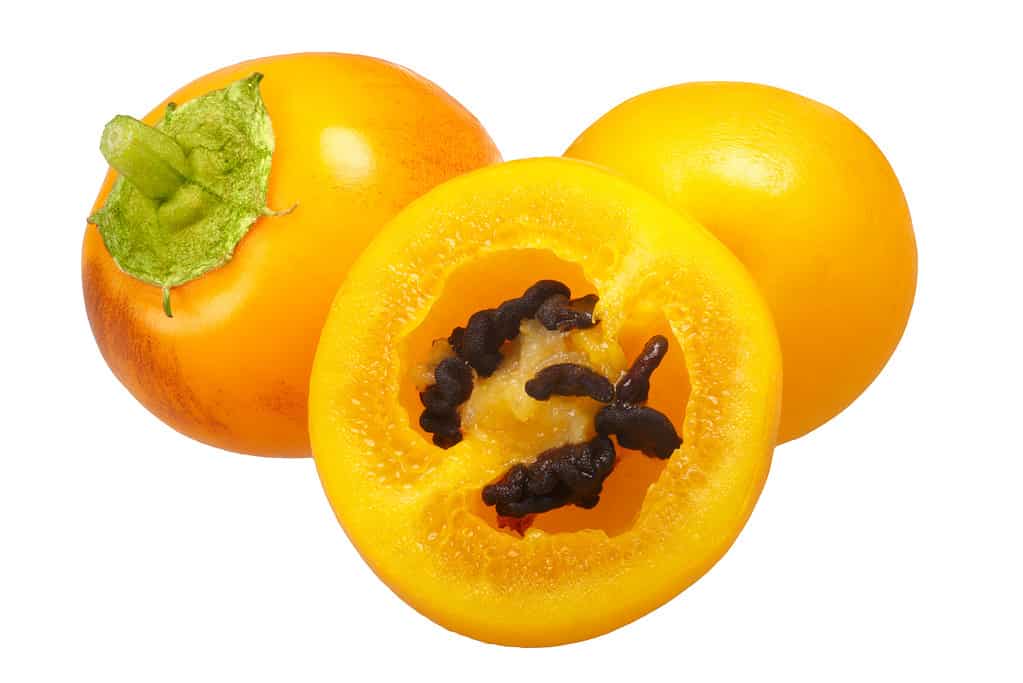
Rocoto Canario peppers are small, round or pear-shaped, yellow chilis.
©iStock.com/851095184
The least cultivated of the five domesticated species of chili peppers is Capsicum pubescens. This species is native to the regions of Bolivia, Peru, and Ecuador. Cultivars of this species have likely been in existence for thousands of years. The Rocoto Canario pepper is the most famous cultivar of this species. The plant is a bushy, cold-hardy cultivar that produces small, round or pear-shaped, yellow chilis. The taste of this spicy chili is rather complex, and people often describe it as a very hot bell pepper as it has thick flesh like a bell pepper and spiciness ranging from a jalapeno to a habanero.
The photo featured at the top of this post is © iStock.com/Marti157900
Thank you for reading! Have some feedback for us? Contact the AZ Animals editorial team.






